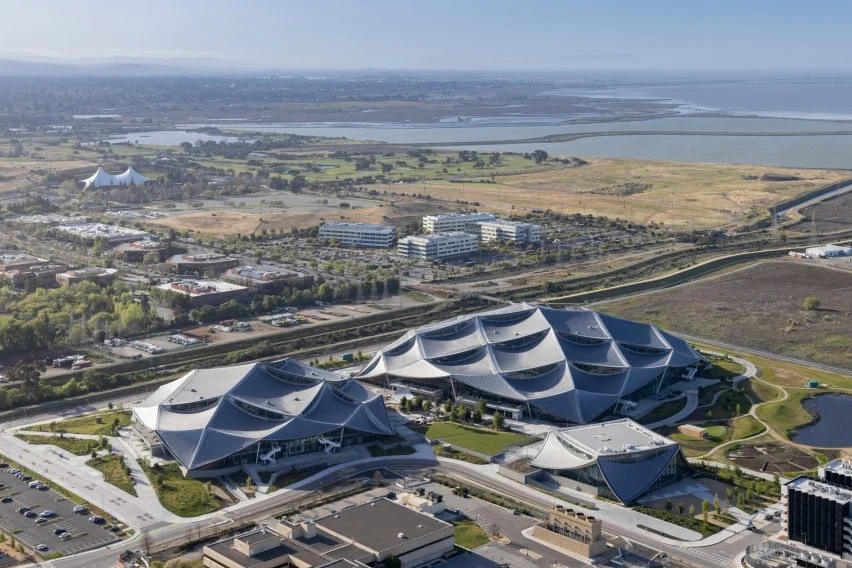With water risks worsening across the globe, a growing number of companies have expressed a desire to assess their water risks and adopt measures to mitigate them.
Many companies, such as the tech giants of Silicon Valley, are realising that simply reducing water usage may not be enough, especially in the context of record-breaking droughts across the Western U.S. – and the world.
Recently, there has been increasing interest in the idea of ‘Net Positive Water’ – following the widespread adoption of this concept in relation to carbon emissions.
But what exactly does it mean to be ‘net water positive’, why does it matter, and is it even achievable?
Let’s take a look.
What is net positive water?
As the UN puts it, “Net positive is an approach that means doing more good than bad. It goes beyond ‘doing less harm’ and urges businesses to have a positive impact.”
Simply put, when a commercial or residential development is net water positive, they are putting more water back into the environment than they are extracting from it.
Why does it matter?
oday, 45% of companies report exposure to risks from water insecurity, estimated at over $425 billion.
This number is likely to grow as companies of all shapes and sizes are exposed to these risks through their own operations or through water consumed across their supply chains.
According to the UN Global Compact CEO Mandate, achieving net-positive water impact (NPWI) can help businesses build resiliency for their own operations and the communities and ecosystems in which they operate.
In doing so, these companies can make a demonstrable contribution to the achievement of SDG6: Clean Water and Sanitation.
According to the OECD (the Organization for Economic Co-Operation and Development), 47% of the world’s population, and many of the world’s primary industries, will be living in geographical areas with strained water supplies by 2030.
In this context, saving water and becoming ‘net positive’ is not just the right thing to do, it makes good business sense. It helps to build resilience against the impacts of climate change and increases an organisation’s ability to adapt to its impacts and well as the demands set by its customers.
How to become net positive?
Net positive water is inherently a good idea, but how can companies go about achieving it?
While each local context and case is different, global water and wastewater asset manager Veolia identifies three key steps that companies can take.
1. Reduce consumption
Water usage is notoriously inefficient. Huge amounts of water are lost to leaks and faulty equipment and we often use far more water than necessary.
Optimising water use means reducing the amount you consume, either by implementing restrictive measures (such as water efficient appliances), or actively monitoring and limiting your usage.
“By optimising your water usage, you reduce the overall amount that you consume, which is probably your first duty as a good global citizen,” says Alban Delpey, Veolia’s Operational Water Manager.
2. Recycling as much water as possible
The second step towards being net positive is recycling some of the water that is used or accessed.
Recycling reduces the overall amount of ‘new’ water that needs to be drawn from the environment, and is an essential building block on the path to net positive.
Some countries, such as Israel and Singapore, already recycle up to 90% of all the water they use instead of returning it to the environment and it’s about time that we all follow suit.
3. Capturing and recapturing
“Capturing an extra stream of water into your cycle is a great way to bring your overall water equation onto the positive side,” says Delpey.
“Rainwater harvesting is the most obvious way of capturing water, so if a property has roof space, this is probably the simplest and most generally available technique,” adds Matthew Lee, Veolia’s Regional Energy Manager.
Stormwater can also be captured and re-used, if it’s easily accessible.
“A lot of councils are trying to capture stormwater these days using clever techniques. They are putting facilities in place so that they can store it and have access to it when required,” explains Delpey.
Silicon Valley leads the way
Arguably the most influential corporations making a biggest splash about net positive water are the tech giants of Silicon Valley. Last year, Microsoft, Facebook and Google all pledged to replenish more water than they use in their direct operations by 2030, addressing concerns about water-guzzling tech facilities amid record droughts.
It’s a question of reputation, too, said Colin Strong, manager of corporate water stewardship at the World Resource Institute to The Guardian. Businesses working in areas of water scarcity don’t want to be viewed as making the problem worse.
Google consumed 3.4 billion gallons of water in 2019, and says its 20% goal reflects what is needed to return regions with high or extremely high water scarcity to a normal level.
Google, and many other tech companies, use water to cool its data centers’ stacks of computers that store and process search queries, YouTube videos, and other data.
“We are pledging to a water stewardship target to replenish more water than we consume by 2030 and support water security in communities where we operate,” Google Chief Sustainability Officer Kate Brandt wrote in a blog post. “This means Google will replenish 120% of the water we consume, on average, across our offices and data centers.”
Google plans to reach its new target by using less water at its buildings and then helping with conservation in surrounding communities, starting with those where water is especially scarce.
Google’s new measures include collecting stormwater for flushing toilets and funding removal of water-hungry invasive plants.

Google’s Bay View campus aims to be net water positive by 2030 (Credit: Google)
In Southern California, Google is even helping to install toilet leak detection technology in low-income housing, to cut waste and keep the water cycling through plumbing systems.
And it seems that Google’s pledge to net positive water seems to be taking shape. Its new Bay View campus in Silicon Valley, which opened last week, has above-ground ponds to gather rainwater and has a building wastewater treatment system to help provide water for cooling, restrooms and irrigation, among other uses.
Google says it is committed to replenishing 120% of the water it consumes in the building by 2030, and all non-potable water demands at the site will be met using recycled water.
Is it all just hype?
While commitments to net positive water by industry giants is promising news, actually achieving these targets isn’t so simple, warns international nature conservation NGO WWF.
“Water is a highly complex resource and differs from carbon considerably,” WWF said in a white paper released earlier this year. “With carbon, up is bad, down is good, and location doesn’t matter. With water, it often lives in a goldilocks zone where location and timing matters immensely.”
In other words, because water is so intractable it can be very difficult to accurately measure whether a company is net water positive or not. Furthermore, there seems to be some confusion around what actually constitutes a net water positive commitment.
The definition of water use varies from company to company as well. Facebook has taken a very specific approach, counting only the water that is evaporated on their premises as their water consumption. On the other hand, PepsiCo is counting all the water that is used in operations, but only in water-stressed regions.
While the push for water ‘positivity’ is an improvement, there need to be more clear guidelines before solid claims can be made.
To solidify the concept of net positive water and its use in the corporate space, James Dalton, co-ordinator of global water initiatives at the International Union for the Conservation of Nature (IUCN), made the following suggestions:
- Define the mission, clearly and transparently, and identify partners that can help you. Water management is no longer about infrastructure – it is about governance, accountability, equity, partnership, economics, and productive clean water services.
- Set your strategic goals: your baselines, timelines, target claims, and comparable indicators and engrain this in your culture so it survives beyond your current CEO. Make it clear who will measure progress, at what business scale, and when – and disclose it.
- Better understand the return on investment. The risk of water scarcity to a company’s operations is material information that adds value to decision making. Commitments need to follow through targeted investment into the right areas, and not become a corporate advocacy tool.
- Avoid projects and programmes – integrate approaches throughout the culture of your organisation to support behaviour change in business practices.
- Invest in where the best water use efficiencies can be made, and where they will have positive and measurable impact. Focussing on water efficiency does not make you positive; it makes you efficient – that’s all
- Understand and recognise your boundaries. Don’t over claim. Water is a complex resource so focus on what you think you can do and deliver on it by understanding the wider water management, social and policy regime you operate in. Local relevance is everything.
- Use, and learn from how water stewardship is framing the debate and then ask how you connect to the dominant narrative in business and water today – risk and response.







